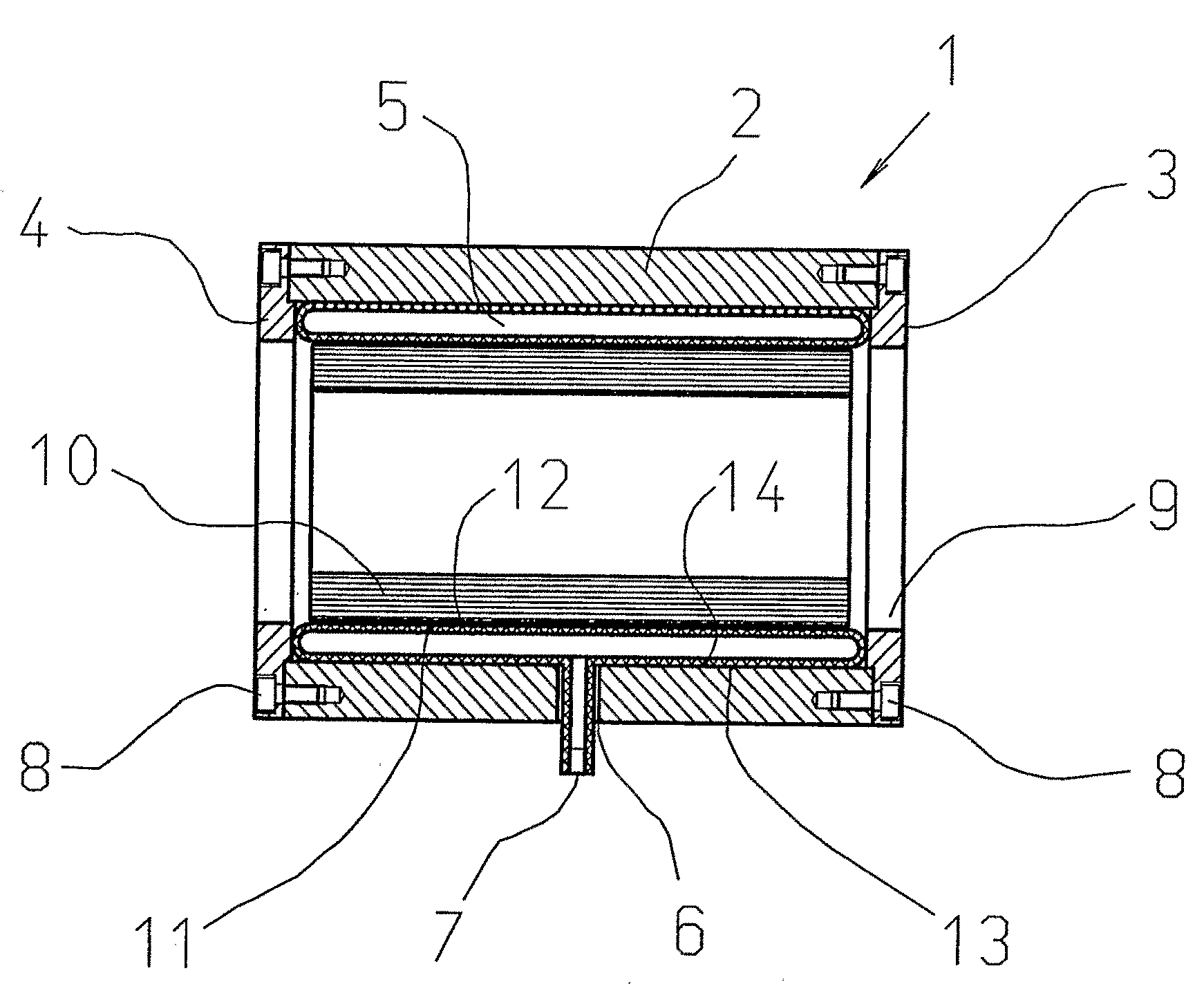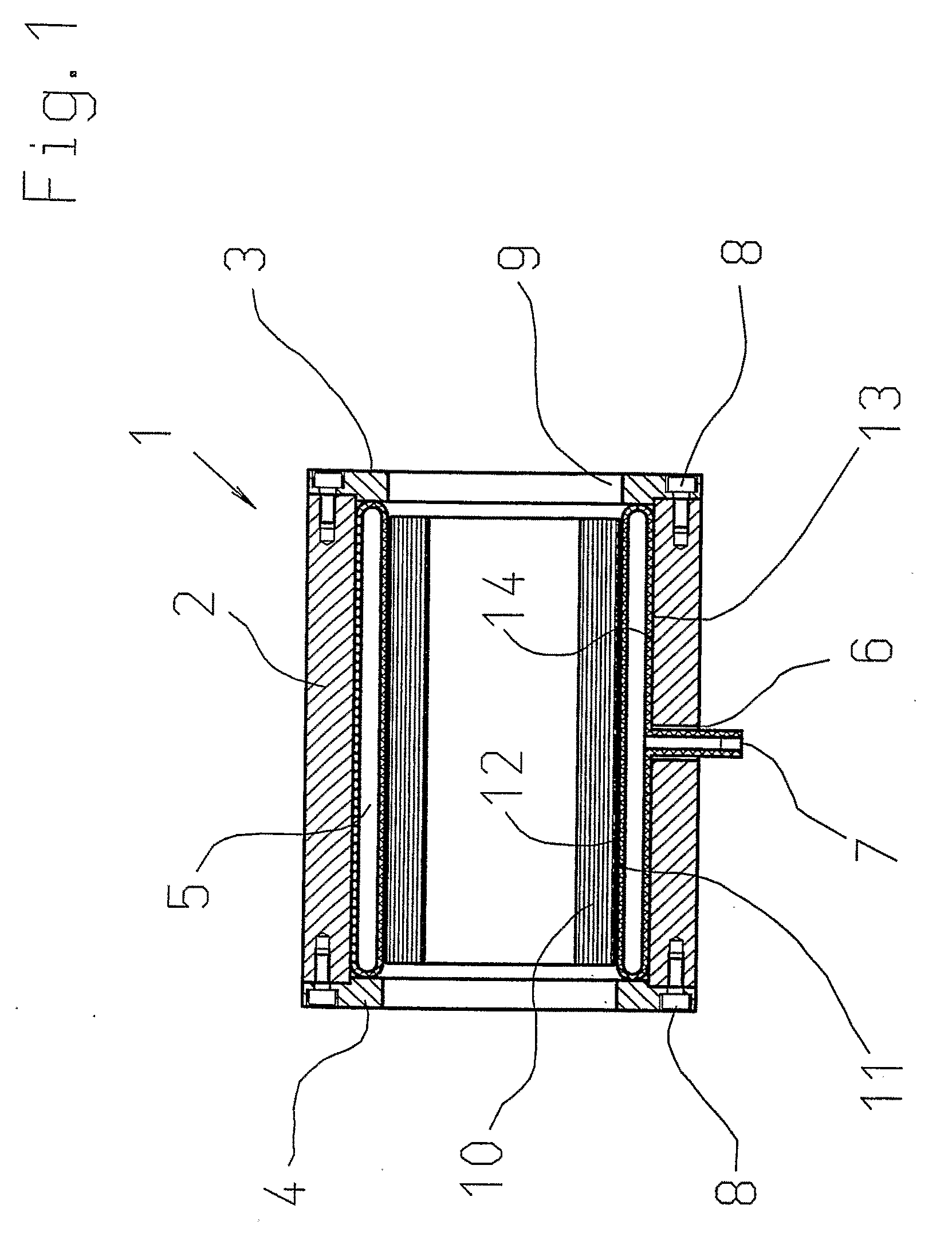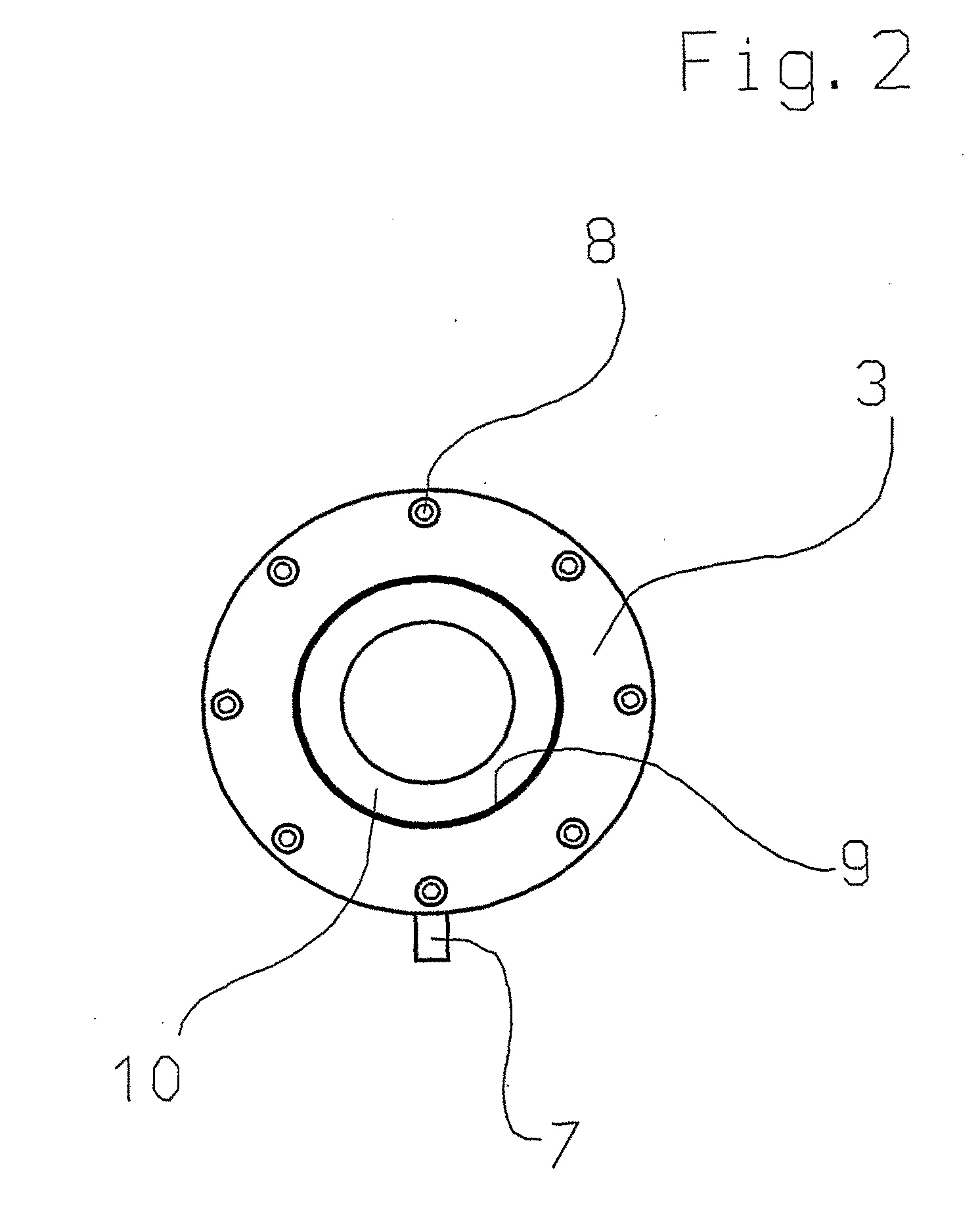Method and Apparatus for Testing Tubular Objects
a technology for testing tubular objects and apparatus, applied in the direction of measuring devices, scientific instruments, instruments, etc., can solve the problems of false test results and high complexity of assembling and disassembling test apparatuses
- Summary
- Abstract
- Description
- Claims
- Application Information
AI Technical Summary
Benefits of technology
Problems solved by technology
Method used
Image
Examples
Embodiment Construction
[0018]FIG. 1 shows an apparatus 1 according to the invention in a sectional side view, comprised of a hollow cylinder 2, two flange disks 3, 4 at the faces, and a pressure shell 5. The hollow cylinder 2 comprises an opening 6, through which a pressure connection 7 of the pressure shell 5 is run to the outside. At the face side, the hollow cylinder 2 is defined by two flange disks 3, 4, which are bolted to the hollow cylinder 2 by mounting bolts 8. The flange disks 3, 4 comprise an opening 9, through which the tubular object 10, which is to be tested, can be inserted.
[0019]For the intended purpose, a paper sleeve section is used as an object 10, which is inserted into the apparatus 1 over its entire length and which is in direct contact with its inner surface with the inner surface 12 of the pressure shell 5. However, it is conceivable that the apparatus 1 is also used for testing other tubular objects, e.g. plastic sleeves. The pressure shell 5 contacts the inner surface 14 of the h...
PUM
| Property | Measurement | Unit |
|---|---|---|
| length | aaaaa | aaaaa |
| pressure | aaaaa | aaaaa |
| hydraulic pressure | aaaaa | aaaaa |
Abstract
Description
Claims
Application Information
 Login to View More
Login to View More - R&D
- Intellectual Property
- Life Sciences
- Materials
- Tech Scout
- Unparalleled Data Quality
- Higher Quality Content
- 60% Fewer Hallucinations
Browse by: Latest US Patents, China's latest patents, Technical Efficacy Thesaurus, Application Domain, Technology Topic, Popular Technical Reports.
© 2025 PatSnap. All rights reserved.Legal|Privacy policy|Modern Slavery Act Transparency Statement|Sitemap|About US| Contact US: help@patsnap.com



